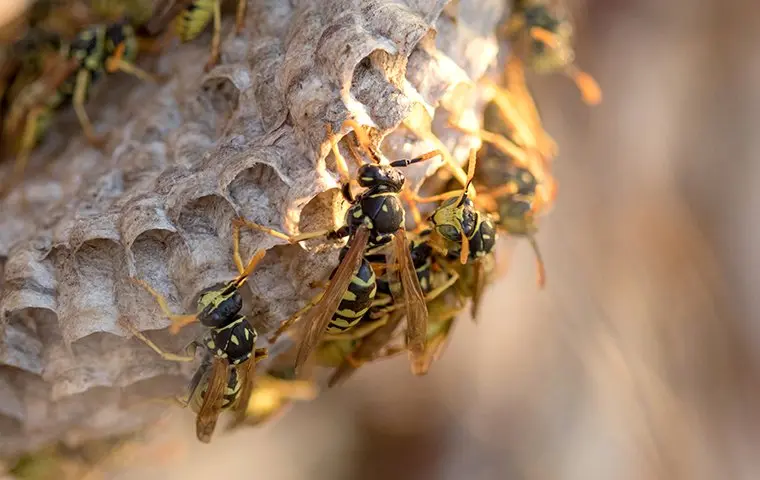It’s easy to spot a paper wasp, yellow jacket, or hornet flying around your property, but can you accurately identify what wasp is in your yard?
While all are the same insect, these pests are different species and create distinct hives. What does a paper wasp nest look like? What about a yellow jacket’s underground hive?
Keep reading to learn how to identify different types of wasp nests that may show up in your front or back yard!
Yellow Jacket Wasp Hives
Unlike most other wasp hives, yellow jackets tend to build their homes in unseen underground tunnels. These pests won’t dig out spots to stay in the dirt, but they will take advantage of any previously abandoned rodent burrows or yellow jacket dwellings.
Because of their spot under your feet, you probably won’t see a yellow jacket nest. You may only realize these pests have populated your yard if you spot a few buzzing around your flowers, birdbaths, or trash can.
Depending on the season, they may also edge close toward your bird feeders or any sweet delicacies laid outdoors for a backyard picnic. Once the weather grows cold, and flowers die out, yellow jackets become a problem for homeowners, no matter where they build their hives.
A yellow jacket hive usually has two entrances or exits when living underground. The worker yellow jackets utilize these openings to forage and protect the hive from potential invaders like birds, insects, and even humans.
But these pests aren’t solely subterranean insects. Yellow jackets can build anywhere on your property. Some homeowners have spotted them inside walls, attics, under porches, or hanging from roof eaves.
Aboveground yellow jacket hives tend to resemble traditional wasp nests with their grey paper-like quality. Most wasp species use chewed wood pulp to craft their large and intricate hives, relying on their saliva to bind everything together.
If you suspect yellow jackets have built somewhere in your yard, avoid approaching the area. Because these underground hives are hard to spot, you may accidentally stumble upon their entrance and anger the pests if the nest is disturbed.
What Does a Paper Wasp Nest Look Like?
Paper wasps are another wasp species you may spot in North Carolina. Wasps can come in various colors; not all are the traditional black and yellow hues attributed to many yellow jacket species.

Paper wasps are usually a dark brown hue, with some having yellow stripes stretching across their abdomens. A few species may even look remarkably similar to a yellow jacket, albeit with smaller proportions.
Unlike yellow jackets and hornets, paper wasps are usually more docile, only attacking predators disturbing their hive or bothering them as they forage. Keeping a respectable distance between yourself, the insect, and their hive should keep you safe!
These pests also avoid building nests underground. Instead, they may create a home in many areas across your yard. For example, you could spot a wasp nest hanging from a tree or even find it hidden under a deck, in your garage, porch, or in bushes.
Some homeowners have even found paper wasps nesting in outdoor furniture, mailboxes, or cooking equipment. Contact a pest control specialist if you’ve seen wasps flying around a particular area.
So, what does a nest look like compared to a yellow jacket hive?
Paper wasps are known for their unique hive shape. Unlike traditional hornet or above-ground yellow jacket hives, paper wasps create smaller nests that resemble an umbrella.
These hives hang downwards, exposing the inner cells and displaying the eggs and workers within. Because of their relatively small size, only a few dozen worker wasps reside inside along with the queens and developing young, according to Oklahoma State University.
At first glance, a paper wasp hive may resemble the honeycomb found in honey bee hives. But don’t expect to find anything sweet in there! These fragile paper cells hold larvae that consume foraged insects like bees, other wasps, and spiders.
While wasp nests are short in stature, don’t underestimate the pests inside. Despite their relatively docile disposition, any wasp is dangerous and will go to great lengths to protect their homes.
Never attempt to remove a paper wasp nest on your own. The angry insects inside will fly out to retaliate against anything they deem a threat and won’t hesitate to give you a few painful stings along the way, either.
If you find a paper wasp nest on your property, promptly contact us at Innovative Pest Solutions to remove the dangerous pests and keep your home and family safe.
Mud Dauber Nests in North Carolina
So, you know what a wasp nest looks like, but where do solitary mud daubers reside?
Mud daubers aren’t social wasps like most hornets and yellow jackets. Instead of living in giant hives with hundreds or thousands of other members, mud daubers tend to craft small dirt structures to house and feed their young.
You won’t find more than one adult female mud dauber in a nest. They only create these burrows to shelter themselves and their developing eggs.
These nests aren’t large either, usually only a few inches in length and large enough to accommodate one wasp and many eggs.
Because of their solitary nature, mud daubers aren’t very aggressive. They will attack if they find you messing with their nests, but they aren’t likely to sting unless given a reason. Of course, unless you’re a spider!
Mud dauber larvae primarily consume a variety of spider species, with the eight-legged arachnids taking up a bulk of their diet. While the mother solely eats plant matter like nectar and pollen, the fast-growing larvae need spiders to develop correctly.
These pests have different nests than paper wasps and yellow jackets, but we still recommend you never bother a mud dauber burrow, even if their small size doesn’t appear intimidating.
Any wasp species can be dangerous, and we urge you to stay safe from these pests! Whenever you have a wasp problem on your property, contact us at Innovative Pest Solutions to take care of the issue.





